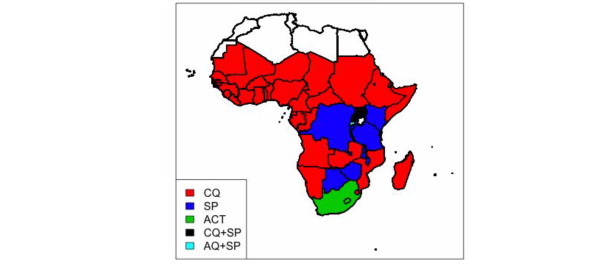Antimalarial Drug Treatment Policy Developments in Africa

This short animation illustrates the temporal changes in national antimalarial policies and the shift to artemisinin-based combination therapies (ACTs) across Africa from 1990 to 2011.
https://www.youtube.com/watch?v=2NJunMCw3Vs
In brief: over the past decade malaria-prone African countries have transitioned from chloroquine (CQ) or sulphadoxine-pyrimethamine (SP) to artemisinin-based combination therapies (ACTs) as a first line policy for uncomplicated malaria. The transition from CQ took place in most African countries in the late 1990s and 2000s.
Malawi was the first African country to change its drug treatment policy from CQ to SP in 1993. South Africa was the first country to recommend an ACT in 2001, while Malawi and Botswana were the last to switch from SP to ACT in 2007.
We intend to share more detail on a mathematical model that investigates the trends in antimalarial drug use in relation to national drug policy soon.
You can also view this animation tracing the spread of antimalarial molecular resistance to sulphadoxine-pyrimethamine.
Contact us for further details on the mathematical model and trends.
